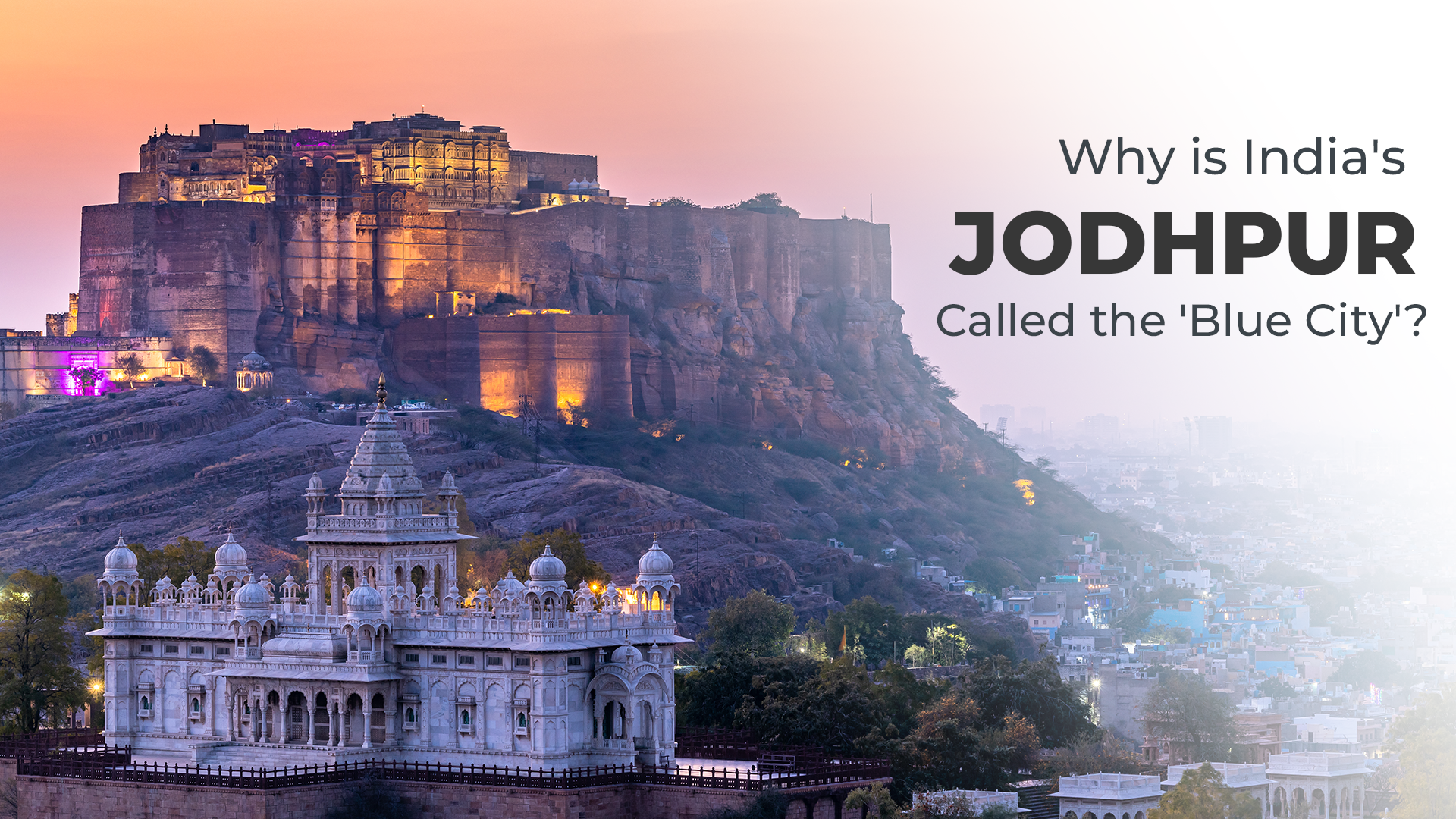Jodhpur, the second-largest city in the Indian state of Rajasthan, has earned the moniker 'Blue City' owing to its mesmerizing sea of azure-hued buildings. Nestled at the edge of the Thar Desert, Jodhpur is renowned for its stunning architecture, vibrant culture, and historical significance. The city's distinctive skyline, adorned with myriad shades of blue, has captured the imagination of visitors worldwide, making it a unique and recognizable destination.
The nickname 'Blue City' carries an air of mystery and allure. The prevalence of the color blue in Jodhpur's architecture is not merely an aesthetic choice but is deeply rooted in the city's history, culture, and spirituality. Understanding the origins of this distinctive color palette unveils a rich tapestry of traditions and influences that have shaped the city's unique identity.
The genesis of Jodhpur's 'Blue City' epithet can be traced back to the 15th century when the region faced a significant upheaval. Legend has it that the Brahmins, the priestly class, began painting their houses blue as a means of distinction and to signify their social status. This practice is believed to have originated during the rule of Maharaja Man Singh to replicate the color of the sky, thereby symbolizing their connection to the divine.
Cultural and Architectural Influences
Jodhpur's architecture, characterized by narrow winding streets and vibrant blue facades, is a testament to the city's historical and cultural amalgamation. The influence of Mughal and Rajput architectural styles is evident, with intricate details and ornate designs adorning the buildings. The use of blue pigments not only added a distinctive aesthetic appeal but also served practical purposes, such as cooling the interiors in the scorching desert heat.
The Symbolism of Blue
In Hinduism, blue holds profound significance, representing the divine and the infinite. The practice of painting buildings in shades of blue in Jodhpur is intricately tied to this spiritual symbolism. Many believe that the blue color wards off evil spirits and brings blessings to the inhabitants, fostering a sense of divine protection.
The prevalence of blue in Jodhpur extends beyond architecture; it permeates the city's traditions and rituals. Festivals and ceremonies often incorporate the color blue, creating a visual spectacle that resonates with the community's cultural roots. The continued use of blue in daily life underscores its enduring importance in shaping the city's cultural fabric.
In essence, Jodhpur's identity as the 'Blue City' transcends mere aesthetics, embodying a profound connection to history, spirituality, and cultural heritage. The blue hues that adorn its skyline narrate a captivating story of tradition, resilience, and the enduring beauty of this desert jewel.
Architectural Marvels of Jodhpur
Jodhpur's architectural landscape is dotted with numerous iconic blue-painted buildings, contributing to the city's unique visual allure. The Mehrangarh Fort, perched majestically atop a rocky hill, symbolizes grandeur and architectural brilliance. Its imposing walls, adorned with shades of blue, offer panoramic views of the 'Blue City' below. Jaswant Thada, a stunning marble cenotaph built in memory of Maharaja Jaswant Singh II, features intricate blue detailing that adds to its ethereal beauty. The Umaid Bhawan Palace, a magnificent blend of Indian and Western architectural styles, further enriches the city's architectural tapestry.
Preserving the unique blue hue of Jodhpur's buildings presents both a cultural responsibility and a practical challenge. The use of traditional blue pigments has given way to more modern paints, posing a threat to the authenticity of the city's color scheme. Local initiatives and community-driven projects, however, aim to address this challenge. Efforts to promote sustainable and eco-friendly painting practices and awareness campaigns underscore the importance of preserving the 'Blue City' aesthetic for future generations.
Economic and Tourism Impact
The 'Blue City' title has significantly enhanced Jodhpur's appeal as a tourist destination. Visitors are drawn not only to the historical and cultural richness of the city but also to the visual spectacle created by the sea of blue-painted buildings. Guided tours through the winding streets of the old city, where every turn reveals a new shade of blue, provide a unique and immersive experience. Vibrant local markets, traditional handicrafts, and delectable cuisine further complement the allure of the blue architecture.
The influx of tourists seeking the 'Blue City' experience has had a positive economic impact on the local community. The hospitality industry has flourished, including hotels, restaurants, and local businesses. Artisans and craftsmen involved in the upkeep and restoration of the blue-painted buildings find employment opportunities. Tourism's economic benefits contribute to the community's overall development and well-being, fostering a symbiotic relationship between visitors and locals.
While cherishing its historical roots, Jodhpur has not been immune to modern influences. The juxtaposition of traditional blue-painted buildings with contemporary structures reflects the city's evolving identity. Urban planning initiatives have aimed at maintaining a delicate balance between preserving the cultural heritage and accommodating the needs of a growing population. Architectural innovations and modern amenities coexist with the timeless charm of the 'Blue City,' creating a dynamic urban landscape.
Jodhpur's identity extends beyond its historical and architectural significance. As a vibrant cultural hub, the city actively contributes to contemporary India. Educational institutions, artistic endeavors, and cultural festivals shape Jodhpur's role in the modern landscape. The city's ability to blend tradition with progress exemplifies its adaptive nature and resilience in the face of changing times.
Jodhpur's journey as the 'Blue City' encapsulates centuries of history, culture, and architectural brilliance. From its origins in the vibrant hues of the Mehrangarh Fort to the challenges of preserving its unique identity, the city has weathered the sands of time.
Jodhpur's 'Blue City' stands as a testament to the enduring allure of cultural heritage. Its blue-painted buildings paint a picturesque skyline and narrate a story of tradition, spirituality, and adaptability. As the city continues to evolve, preserving its unique identity becomes a collective responsibility—ensuring the 'Blue City' remains a timeless gem in the tapestry of India's cultural heritage.
